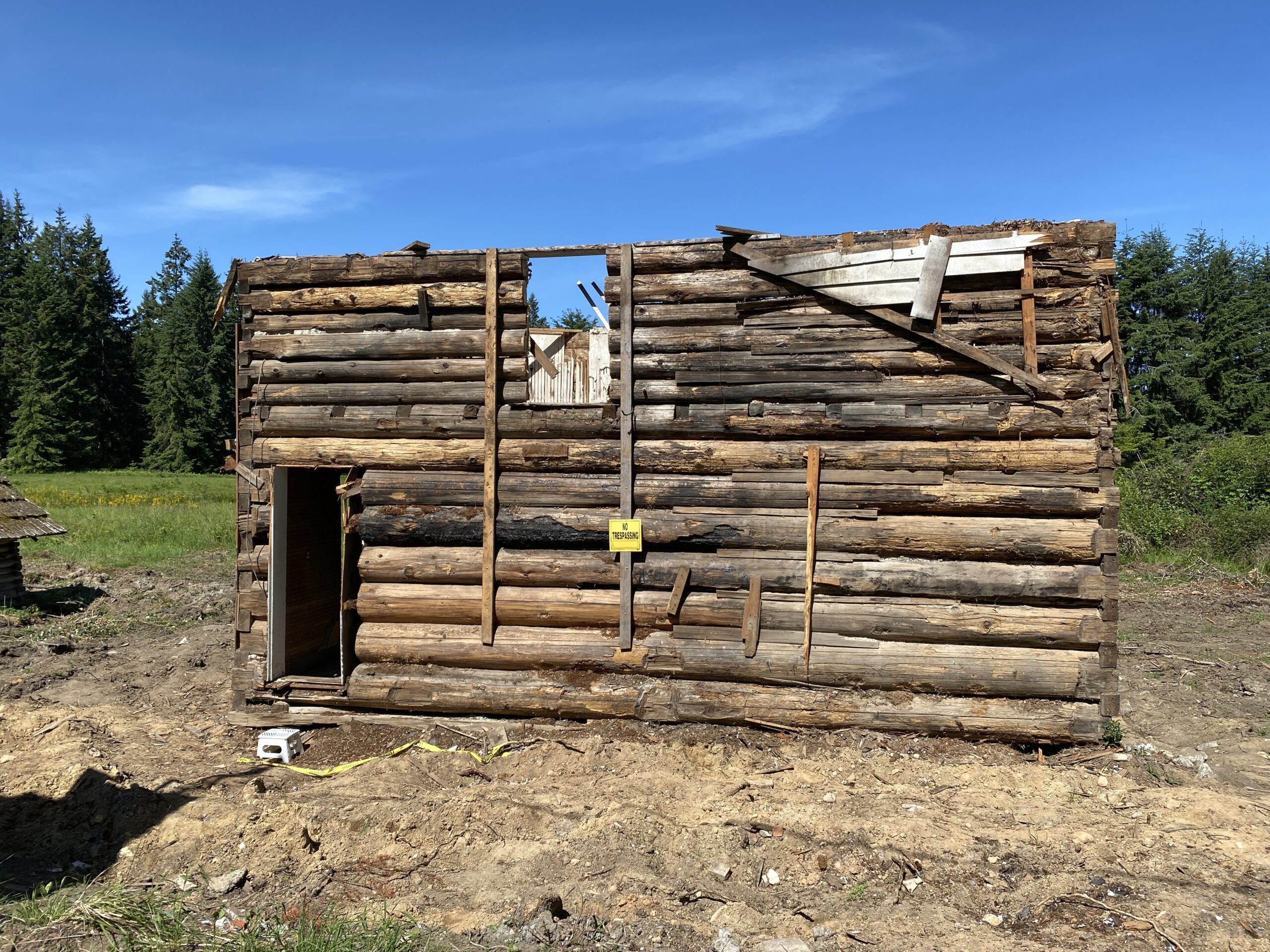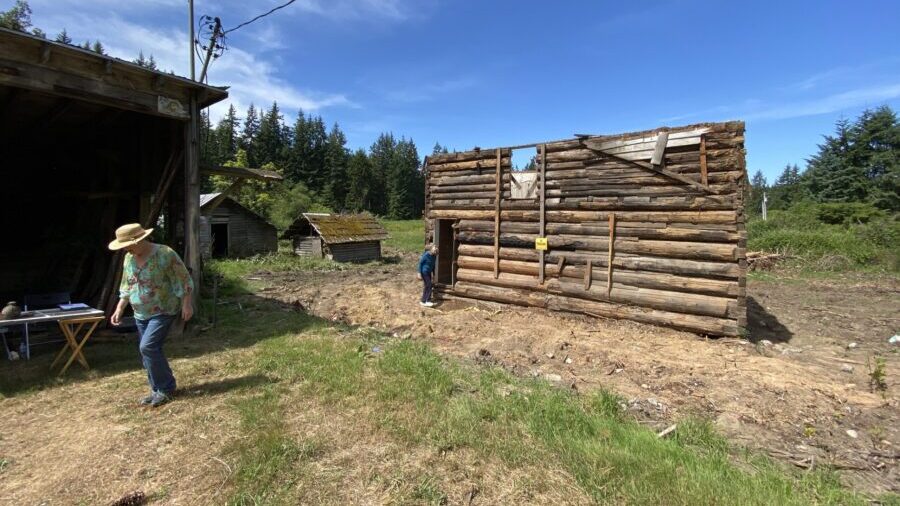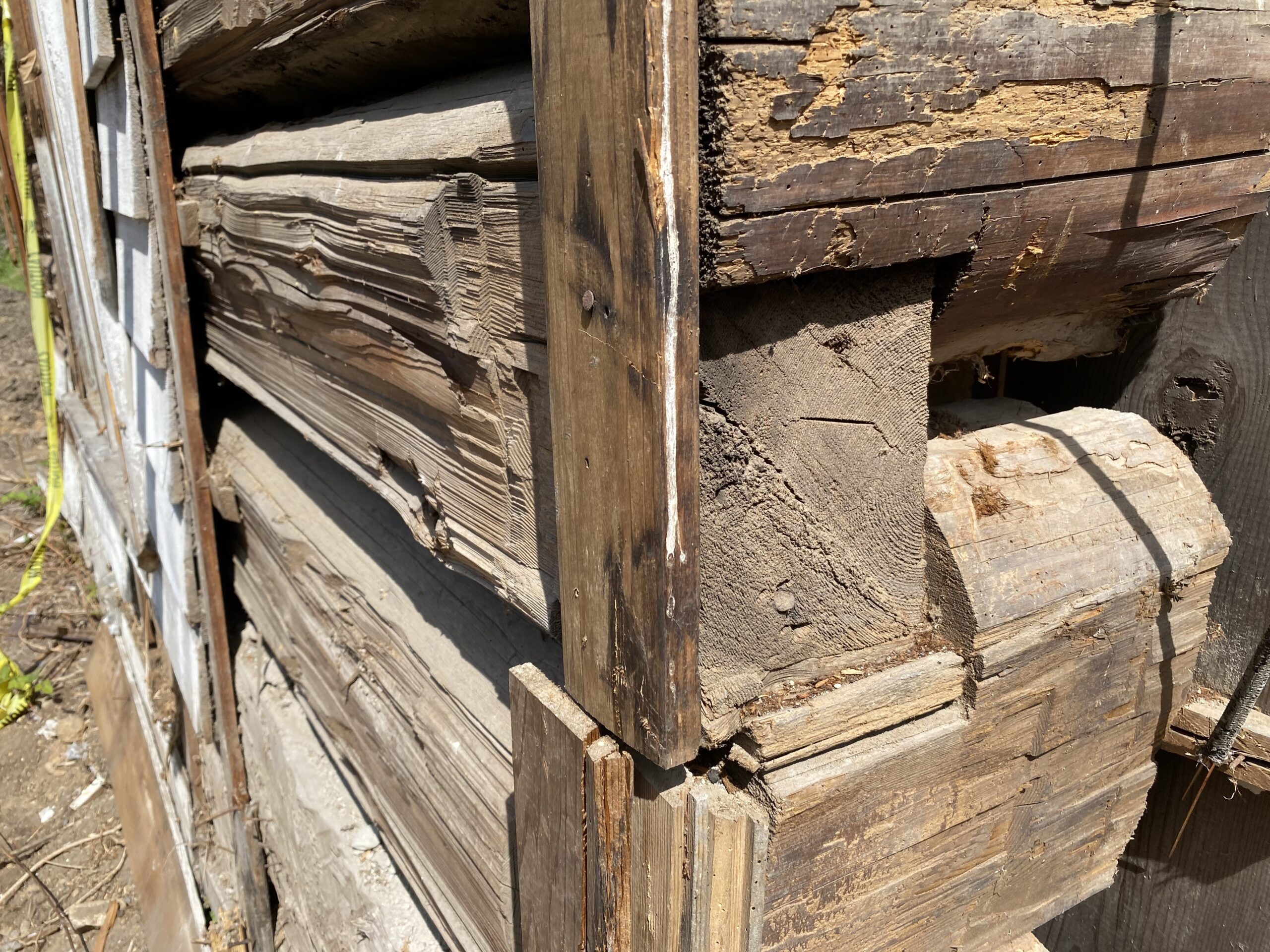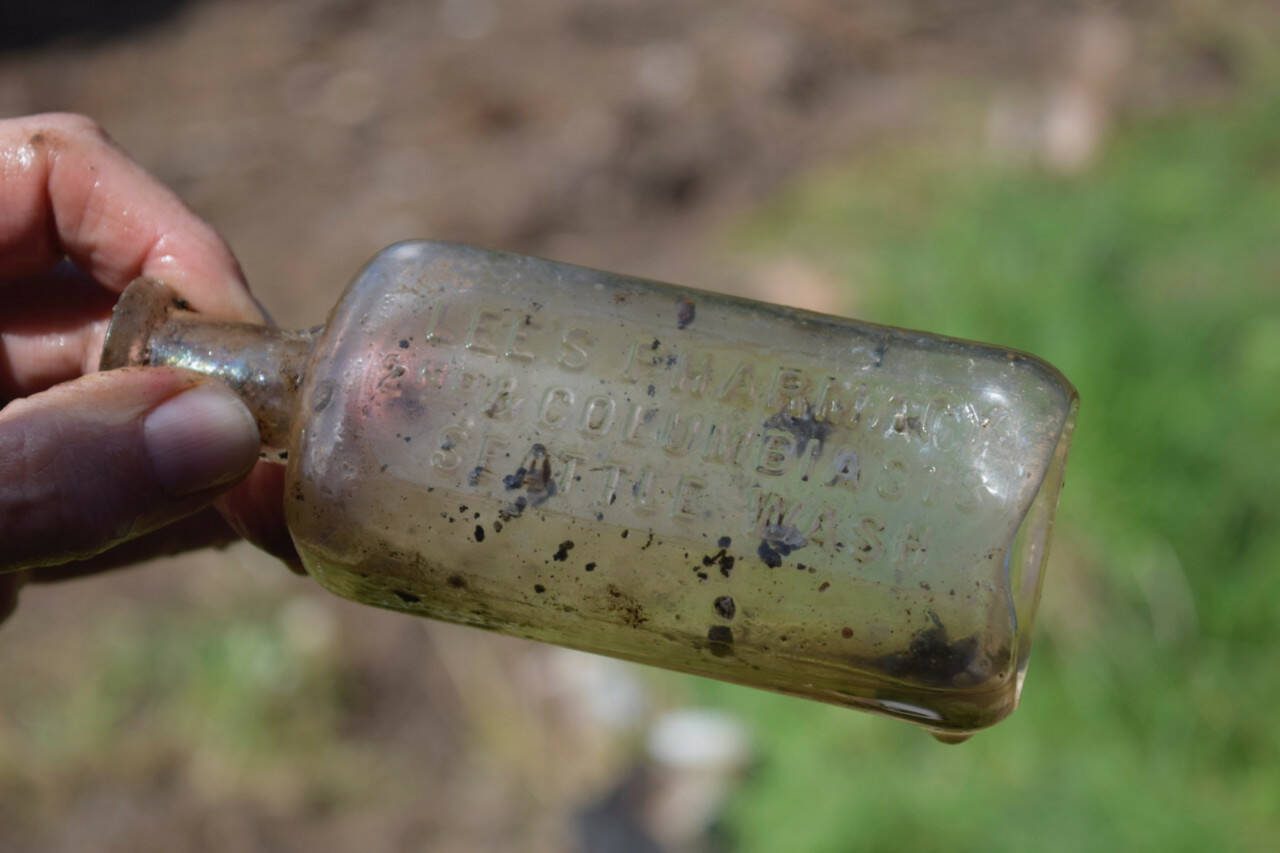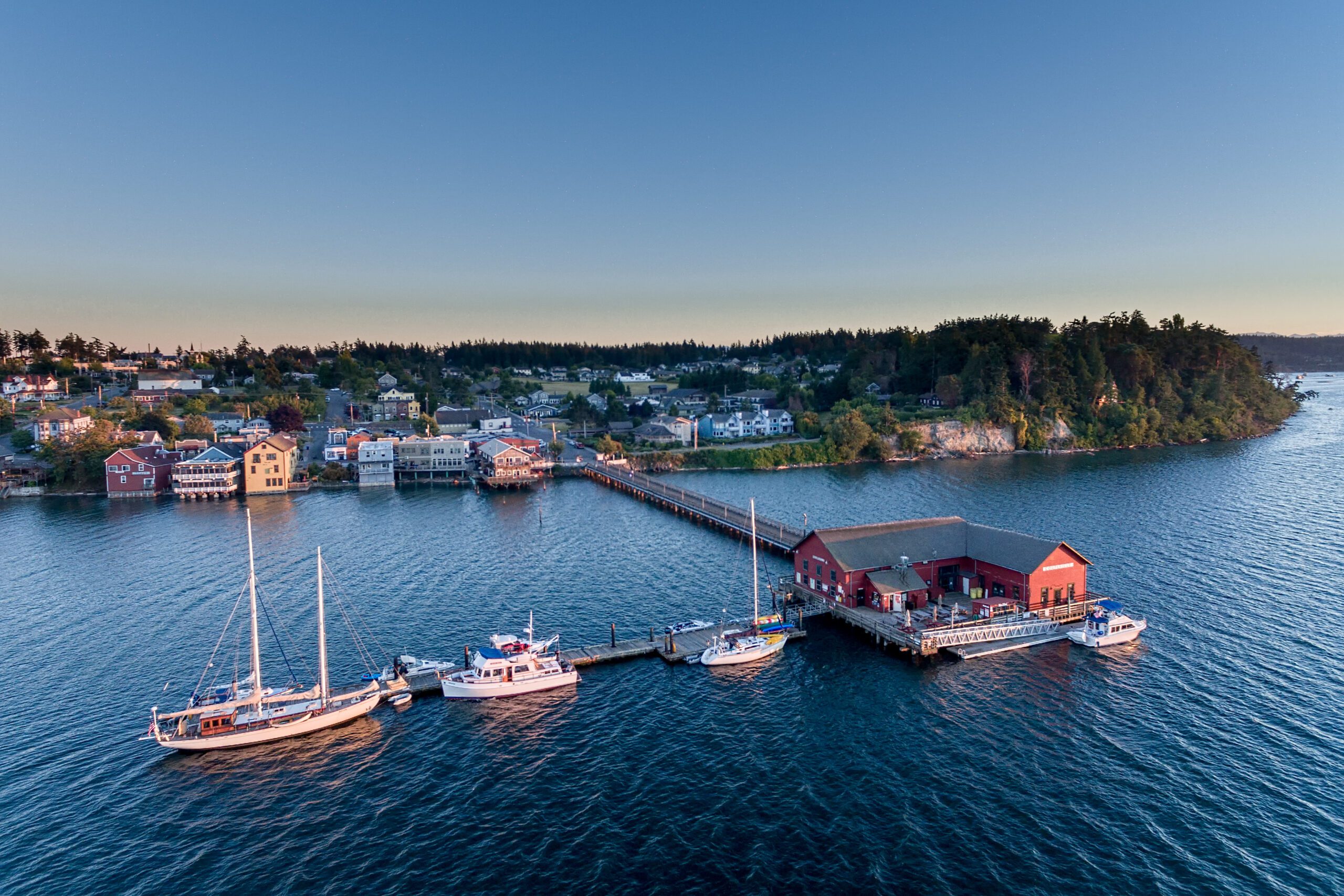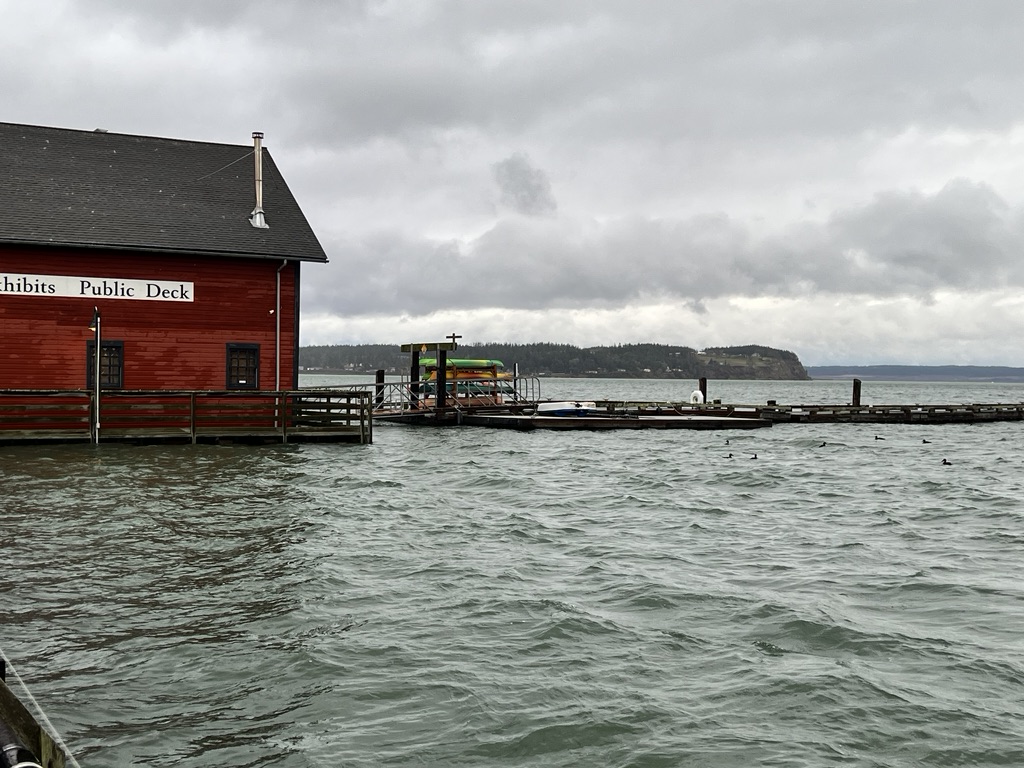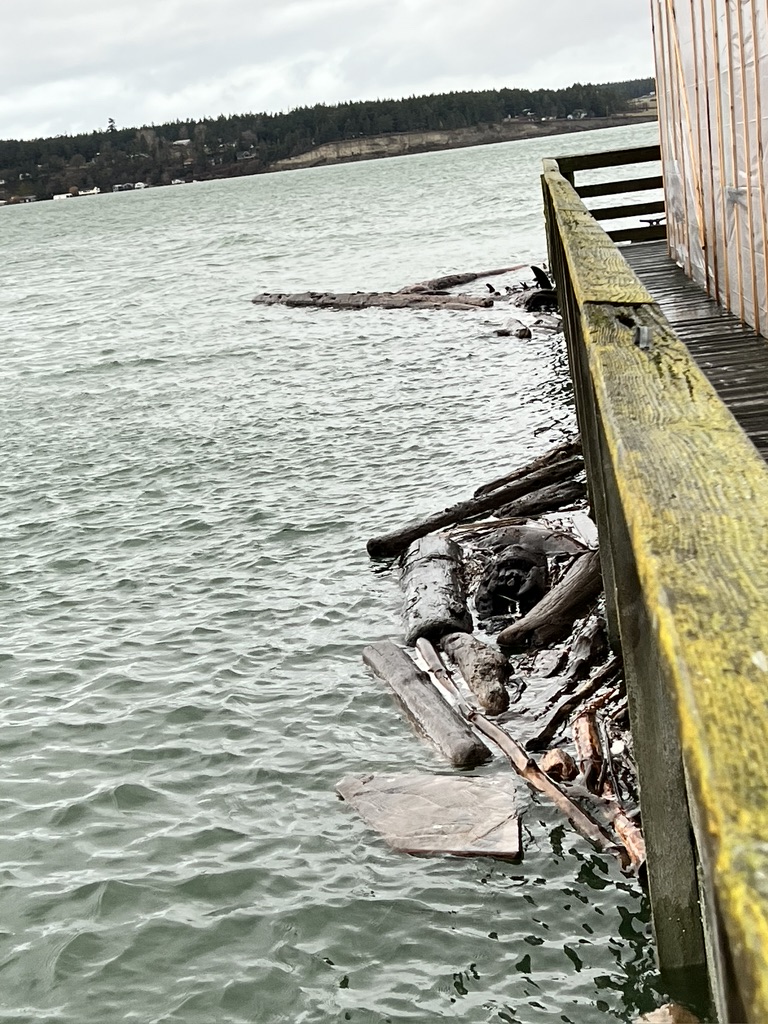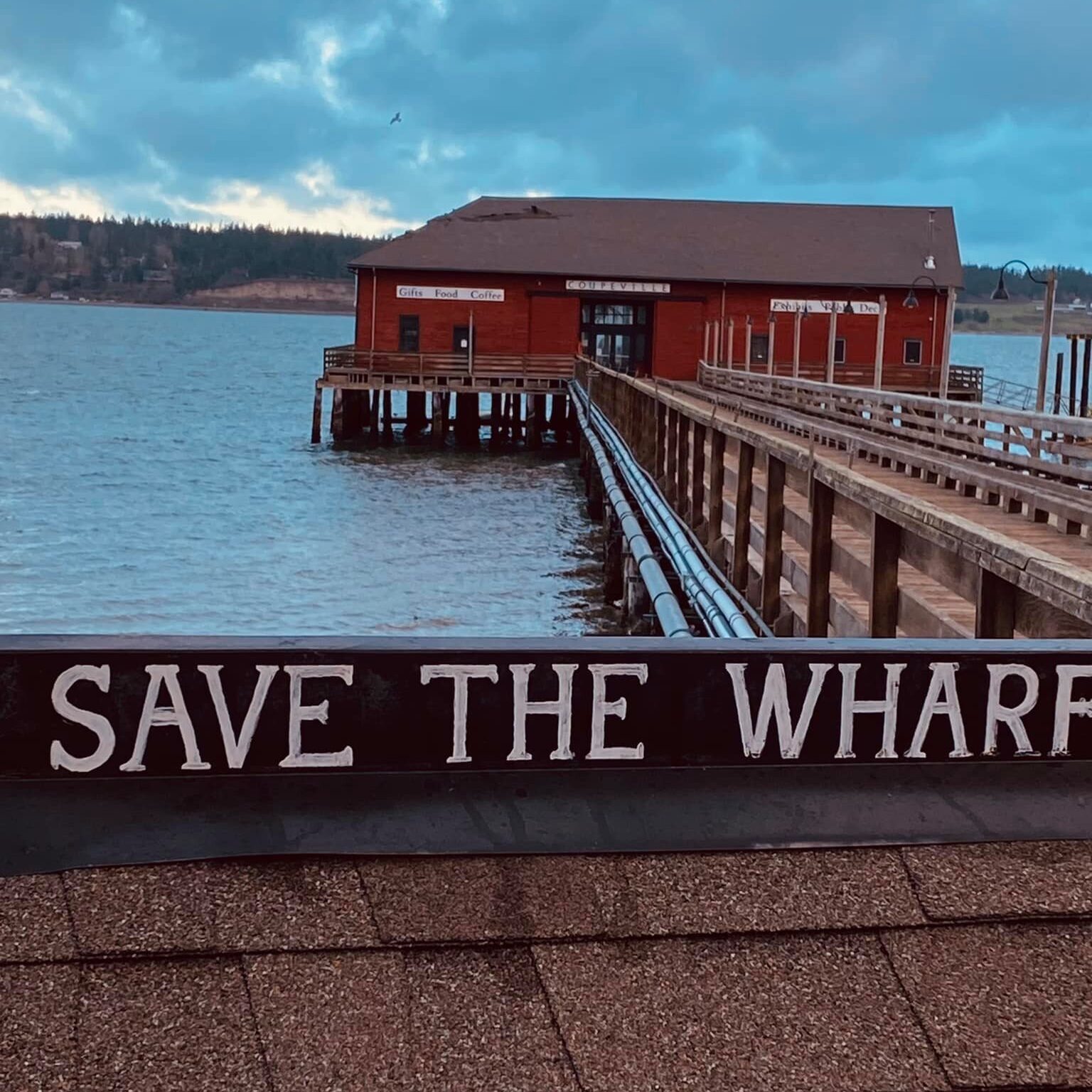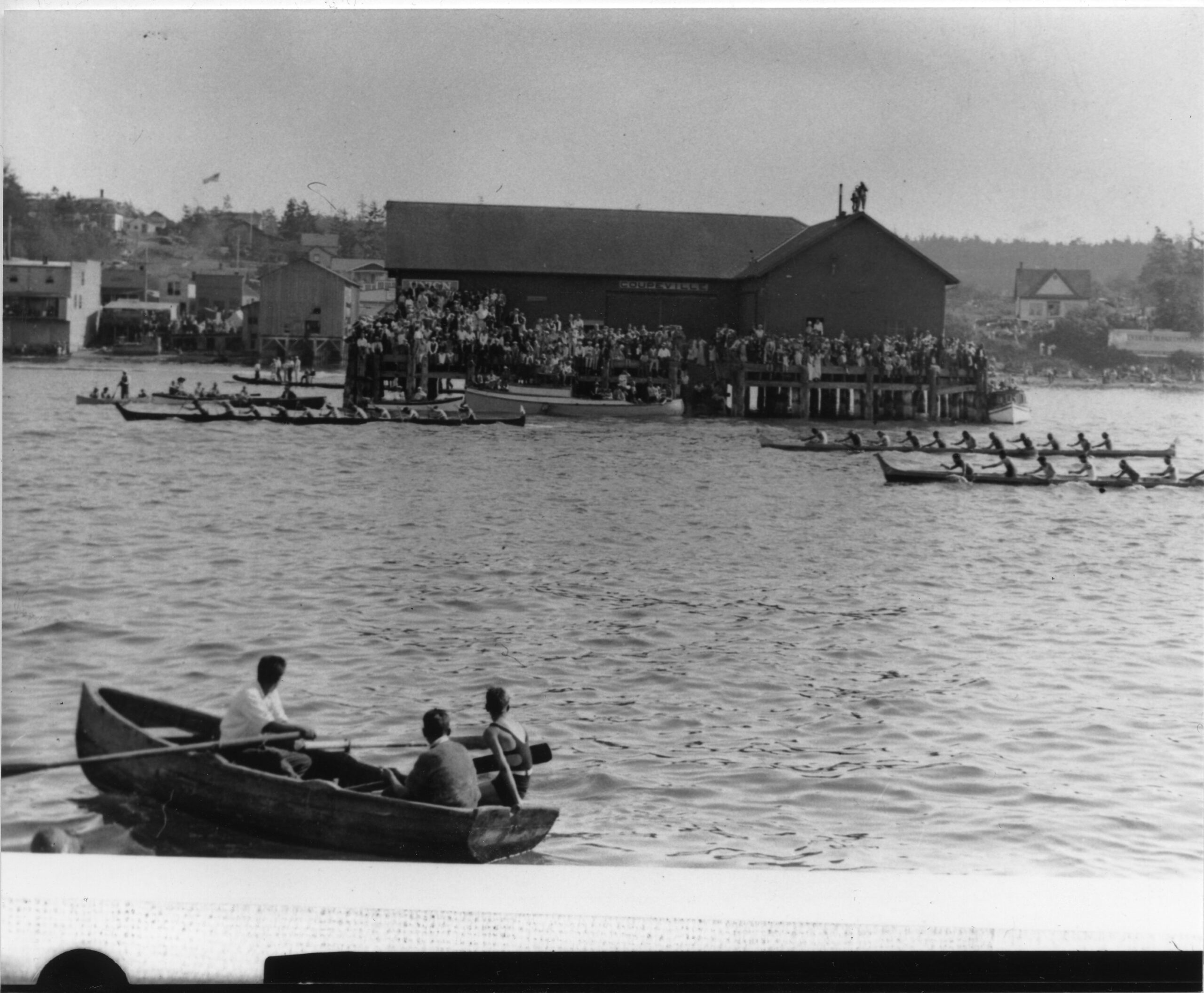Langley log cabin
Status: Most Endangered Places
Year Listed: 2024
Location: Langley, Island County
This historic log cabin was recently discovered near Langley on Whidbey Island. Property owner Marian Myszkowski began demolition of a condemned building on her land near Langley. But when the outer shell of the building was torn down, inside she found a hidden log cabin dating from decades earlier. While little is known about the log cabin’s provenance or original function, it is estimated to date from somewhere between the 1850s and the 1880s, from the earliest years of Whidbey Island’s white settler history. Fortunately, Marian did not proceed with the demolition and instead contacted the South Whidbey Historical Society. One of the society’s volunteers, retired historian and cultural resource specialist (and Washington Trust board member) Kyle Walker, has taken on the project of investigating the cabin’s origins. In the meantime, the log cabin has been named to the Washington Trust’s Most Endangered Places list in order to raise public awareness and funding.

